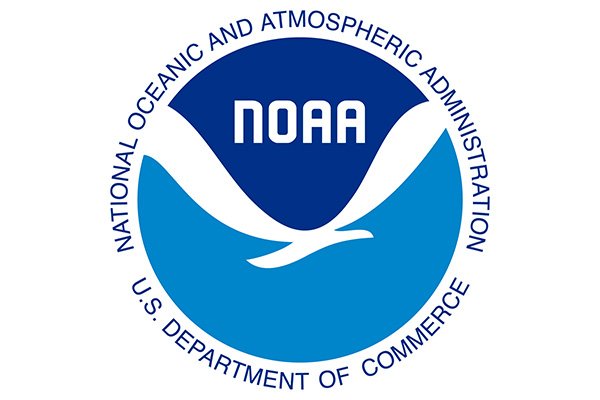Understanding Climate Impacts on Fisheries
Climate change impacts on fisheries.
Fisheries are facing a range of impacts associated with climate hazards. Key challenges center on the effects of ocean warming on marine life, fisheries, and communities. Our research has explored how future changes in ocean warming may affect the distribution of marine species and their availability to regional fishing communities.
In brief:
- The rate and magnitude of climate impacts affecting Northeast US fisheries is growing, resulting in fisheries and their associated communities being vulnerable to changing ecosystem conditions.
- Species distributions are shifting, with many moving northwards, resulting in changing species interactions and community dynamics.
- Changes in catch and landings composition, gear and fleet diversity, and fishing behavior are changing how fisheries operate along the Northeast coastline.
- Our interactive map below provides information for 16 communities regarding future changes in species distributions and implications for their fisheries.
Our research outputs below focus on the impacts of ocean warming on fisheries. Warming ocean temperatures and changing ecosystem conditions affect the distribution, growth, and phenology (timing of life events, like spawning) of commercially fished marine species. These changes alter the mix of species fishing vessels encounter. They also impact where, when, and how they fish, as well as strategies needed for long-term future success.
The distribution of many marine species will change under continued ocean warming as they try to stay within waters that overlap with their preferred temperatures. In the Northeast US, the more northern regions (i.e. the Gulf of Maine and Georges Bank) are likely to experience declines in commercially-important groundfish and traditional forage species as ocean temperatures rise. At the same time, these regions will likely see increases in coastal fish species and warmer-water forage species that were historically more abundant in southern regions (i.e., southern New England and Mid-Atlantic Bight). Find out more about climate impacts and species changes.
Projecting changes in availability of species
Planning for potential changes involves having information about how future species distributions may change. To do this, we can use species distribution models to estimate relationships between where and when a species was observed during Northeast Fisheries Science Center and Department of Fisheries and Oceans bottom trawl surveys, and the environmental conditions at those locations and times. Based on these relationships, this model can then be projected using expected environmental conditions from global climate models.
In the research presented below, we used future sea surface and bottom temperature data from multiple global climate models run under the SSP5-8.5 scenario. Mean temperatures as well as the 5th & 95th percentile values were derived from the climate model runs to provide an estimate of uncertainty across model runs. Under this scenario, we anticipate the Northeast Shelf to experience an increase in regional SSTs of +1°C above present-day levels (2010-2019) by mid-century, and as much as +4°C by 2100. Results we present in the community reports focus on key temperature change thresholds to describe changes in marine species expected for incremental degrees of warming.

Using these temperature thresholds, we can project how species availability may change into the future. The maps below show an example for haddock at a regional scale. For a species like haddock, warming may result in lower abundance in areas like Georges Bank near Cape Cod, but it may create opportunities for expansion in the eastern part of the Gulf of Maine and further north along the Scotian Shelf.

Community-relevant changes in species availability
Alongside understanding changes within entire large marine ecosystems and over broad spatial regions, we also need to localize these changes to support coastal communities and their capacity to plan for future impacts. Fishing communities will experience climate impacts both through changes in the species they currently catch and the emergence of new species to their fishing grounds. To understand these community-specific changes, we summarized species distribution model projections for fishing areas used by vessels that landed commercial catch in a specific port. For 16 communities, we created reports that explain changes in currently harvested species, as well as species that may provide fishing opportunities in the future.
Explore the map below to see expected changes for fishery species for a community. If your community is not available, nearby communities may serve as analogues, or we may be able to generate results for additional communities that are actively pursuing adaptation planning; please contact us.
Useful resources and tools links
Planning for change
Once you've taken the steps to understand the problem, the hazards, and the impacts to your fisheries system, it's time to plan your adaptations.
Go back to Climate Adaptation Planning for Fishing Communities homepage.
Staff Contact
Please contact Dr. Kathy Mills with any questions.
Project Sponsor
The information within this site was funded and supported by the NOAA Climate Program Office through the Coastal and Ocean Climate Applications program under awards NA15OAR3410120 and NA19OAR4310384.
Read More
-
New: Climate & Fisheries Planning Tool
The Science for Nature and People Partnership (SNAPP) working group on climate-resilient fisheries, led by GMRI Senior Research Scientist Dr. Kathy Mills, recently developed a …
Tidings
-
Gulf of Maine, Explained: Storms and Coastal Flooding
In this edition of Gulf of Maine, Explained, GMRI Postdoctoral Researcher and coastal hazards expert Dr. Hannah Baranes talks about how we can use the …
Gulf of Maine, Explained
-
FishSCORE2030: Supporting Climate-Resilience in Fisheries
GMRI Research Scientist Dr. Kathy Mills is leading a new collaborative effort to build an international network of scientists, stakeholders, and practitioners who will identify …
Tidings
-
2023 Research Progress Update
Each year, to keep you updated on our research team's progress, we develop a report showcasing some of our lab's achievements. More broadly, this report …
Reports




